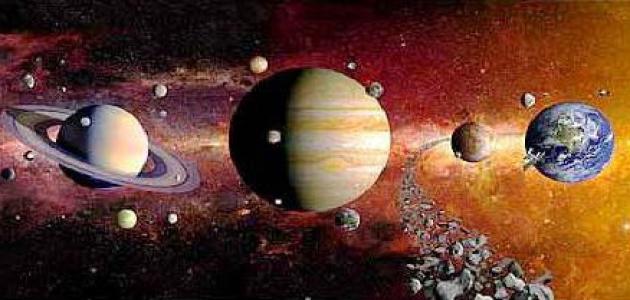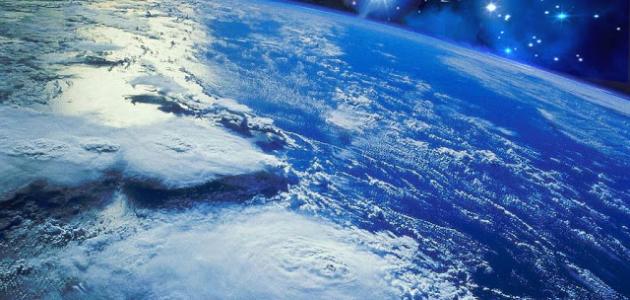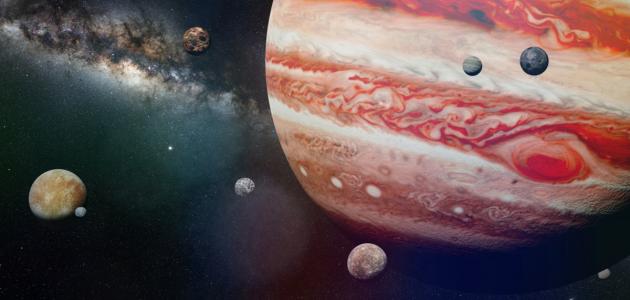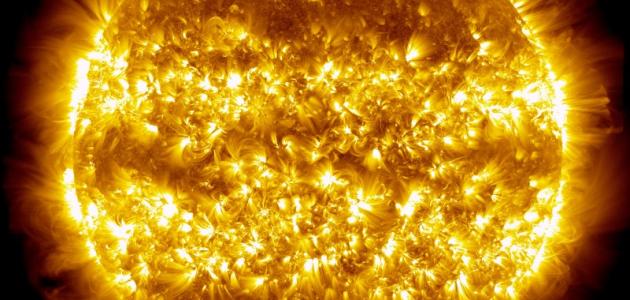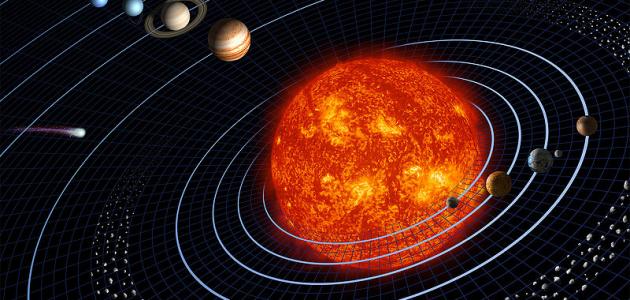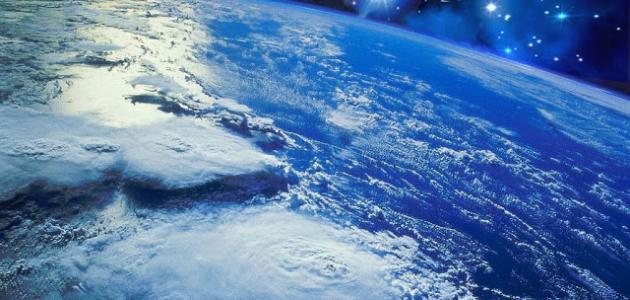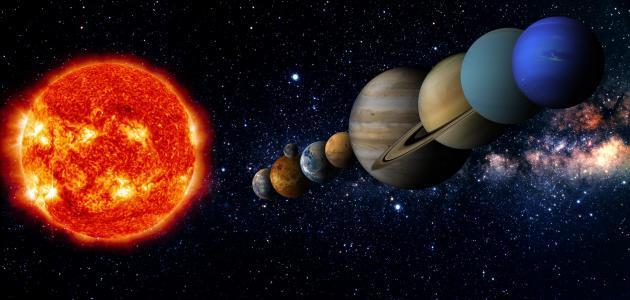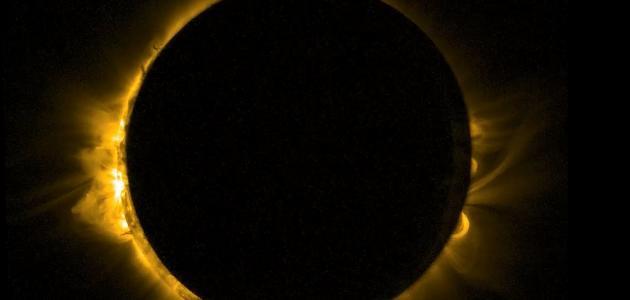Overview of the Earth's layers
The surface of the globe is considered a home for human beings, as they practice all their different life activities on it, and yet the majority of human beings do not think about what the earth contains in its interior and what is below its surface, as the planet consists of layers of different composition and characteristics distributed over an estimated distance of 6,370 km from The surface of the earth reaches its center, and the temperatures of the inner layers of the earth increase much more than those prevailing on its surface, as the heat in some of these layers can reach temperatures equal to the temperature of the sun, and scientists have been able to study many characteristics of the inner layers of the earth such as temperature, density, composition and other characteristics in indirect ways, as the use of direct methods such as collecting samples to know the properties of layers and studying them is limited to what a person can access directly through the ground through drilling, so drilling operations cannot reach more than 0.2% of the depth of the ground, i.e. with a distance of no more than 12 km, and the structure of the earth's layers can be clarified through the mechanical properties of these layers or through their chemical properties.
Classes according to mechanics
The layers of the earth were classified and studied according to their mechanical or physical properties such as durability, hardness, and the physical state of each of the layers. Therefore, the layers of the earth were divided into five different layers, as follows:
Read also:What is the name of the moonlight?Lithosphere
The lithosphere is considered the first layer of the Earth’s layers, and it is the solid outer surface on which all living organisms, including humans, live. The lithosphere forms what is known as the tectonic plates of the Earth, which move relative to each other. And from its name, most of the lithosphere consists of solid rocks, with the exception of a small percentage of magma located under volcanoes or in places where a flow of this magma occurs, and that percentage does not exceed 0.1% of the entire volume of the Earth’s lithosphere, and the lithosphere consists of two main parts, which are The crust (in English: Crust), which is considered the upper part of the lithosphere, and the mantle (in English: Mantle), which forms the lower part of the lithosphere, and these two parts form with each other a relatively solid layer that extends throughout the Earth’s entire layer of the lithosphere, as it extends for a distance It starts from zero on the surface of the earth to approximately 100 km along its interior.
fluid casing
The fluid mantle or asthenosphere is located below the lithosphere, as this layer extends from 100 km to approximately 350 km towards the Earth's interior. To break - more than the behavior of solid materials that the lithosphere goes through, and thus it is roughly similar to the chemical properties of what is known as the lithosphere curtain except that the fluid envelope is soft, due to its proximity to high temperatures that may reach a degree sufficient for rock melting. In it, and the presence of molten rocks among the minerals of the fluid envelope makes it acquire its fluid nature, unlike the lithosphere that contains completely solid minerals that make its rocks solid and interconnected with each other despite the partial melting of the rocks in it.
Read also:Moon phases in orderThe fluid envelope is a major source of most magma or magma, and this is due to the proximity of the temperature of that envelope to the melting point, and most of its constituent places may contain partially molten rocks, and the fluid envelope has a close relationship in activating the formation of volcanoes on the borders of Tectonic plates, where these plates press on the fluid envelope or push the water towards it, which leads to the eruption of the magma present in it to the surface of the earth's crust located on the borders of the tectonic plates forming volcanoes in those areas, and what should be noted is that the fluid envelope flows at geological rates of up to a few centimeters each year.
middle cover
The mesosphere or mantle layer extends at a depth ranging from 350 km to 2900 km towards the Earth's interior and below the fluid envelope. The mesosphere is divided into two main layers: the upper mesosphere and the lower middle layer. or lower mesosphere (in English: Lower mesosphere); As the density of rocks increases with the increase in depth through the upper layer in response to the increase in rock pressure, and for this reason it is called the transitional zone. And with the continued progress in the layers of the earth and reaching the cover of the lower middle layer, the density of the rocks increases dramatically and surprisingly, as a result of the exposure of the crystal structure of most minerals in the rocks of that layer to changes that increase their density, but this density remains almost constant along the length of the cover. The lower middle, which starts from a depth of 660 km to reach the boundaries of the outer core of the Earth, at a depth of approximately 2900 km.
Read also:When is the moon full?outer core
The outer core layer is located below the middle layer, mantle, or mesosphere layer, as this layer is characterized by its presence in the liquid state only, because it contains elements and minerals in the liquid state such as iron, nickel and other elements, and thus it is responsible for the emergence of the magnetic field of the planet The Earth, and it should be noted that this layer was adopted in the chemical and mechanical classifications of the Earth's layers.
The inner core
The inner core layer is subjected to high pressure more than the other layers, which makes it solid in nature, and it is worth mentioning that this layer is similar to the outer core layer in the mineral composition that contains large amounts of the iron element, in addition to the similarity of temperatures in the two layers. to a certain extent, with a slight elevation in the inner core layer.
Classes by chemical
The layers of the earth were divided according to the chemical properties of the layers into three main layers; It is the crust, and the mantle or curtain with its upper and lower layers, in addition to the core layer that is divided into an inner and outer core.
Dandruff
The crust layer (in English: The Crust) is the thinnest of the earth’s layers, as its thickness is about 8 km under the oceans and is called the oceanic crust, while it reaches 32 km under the continents under the name of the continental crust, and the temperatures in the earth’s crust are proportional to the increase in depth, as it increases to reach to approximately 870 degrees Celsius in the depths of this layer, and this heat is considered sufficient to start melting the rocks at those depths, and the earth’s crust consists mainly of two types of rocks, namely basalt rocks that form the crust at the bottom of the oceans, and granite rocks that form the crust at the bottom of the oceans Below the continents, and the basalt rocks are denser and heavier than the granite rocks that make up the crust of the continents, and the crust is distributed across floor slabs called plates that float on a fluid layer known as the mantle, and these plates move comfortably, but they may collide with each other in certain places, which may It leads to earthquakes as a result of this collision.
the scarf
The mantle layer consists mainly of iron, magnesium, aluminum, oxygen, and silicon, as the curtain is divided into two main layers, namely the upper mantle, which reaches a distance of approximately 670 km below the surface of the earth or the crust. And the lower mantle (in English: Lower Mantle), whose depth ranges from 670 km to approximately 2,890 km below the surface of the earth, and the characteristics and nature of each of them differ. The lower mantle consists of solid rocks that remain so even though they are exposed to temperatures exceeding 3,000 degrees Celsius; The reason is that these rocks maintain their solid state as a result of the great pressure on them. As for the upper mantle, it contains temperatures ranging from 1,400 to 3,000 degrees Celsius. The upper part of this layer consists of solid rocks, while the lower part contains molten and solid rocks.
pulp
The diameter of the Earth's core is approximately equal to the diameter of Mars, which extends from the bottom of the mantle layer to the center of the Earth, and this layer consists mainly of the elements nickel and iron, as it is a source of the planet's magnetic field, and the Earth's core accounts for nearly a third of its total mass, The temperatures in it reach very high levels ranging from approximately 2,200 to 5,000 degrees Celsius, and the core layer is divided into two parts, which are the liquid outer core, and the solid inner core, and the chemical properties of each of these two sections differ. to the core of the Earth.
Class comparison
mechanical classes
The layers of the earth, which were classified according to their mechanical properties, differ in terms of the nature of their physical state and in terms of their thickness across the Earth’s interior, as follows:
| Layer name | its physical condition | Layer thickness in km |
|---|---|---|
| Lithosphere | A solid but brittle layer at shallow depths. | It ranges between (5-200) km. |
| fluid casing | Soft and fluid layer. | It ranges between (100-300) km. |
| Upper middle cover | Solid and not brittle, and its rock density increases rapidly with increasing depth. | It ranges between (300-400) km. |
| Lower middle cover | It has more density and rigidity than the upper middle layer. | 2300 km. |
| outer core | liquid layer. | 2300 km approximately. |
| inner core | Hard and non-brittle layer. | 1200 km approximately. |
chemical classes
The layers of the earth that have been classified according to their chemical properties differ in terms of their chemical nature and in terms of their thickness across the Earth’s interior, as follows:
| Layer name | its chemical components | Layer thickness in km |
|---|---|---|
| Dandruff | Consist of high levels of silicon, aluminum and oxygen. | It ranges between (5-70) km. |
| the scarf | It contains high levels of magnesium and iron, as well as moderate amounts of silicon. | 2900 km approximately. |
| pulp | It consists of iron and nickel. | 3500 km approximately. |
Methods for studying the layers of the Earth
Scientists have come to know the layers of the earth in several ways, including:
- Magnetic and Gravitational Evidence: Scientists have concluded that the core is liquid due to the presence of the magnetic field, as permanent magnets cannot exist at high temperatures, that is, it is the result of ionized materials moving within a liquid in the interior of the earth, and scientists have also concluded that the core consists of metal, and it is more dense than the crust By measurements of gravity with the mass of the Earth.
- Experiments on rocks and minerals: Excavation work helped to obtain rocks from different depths of the earth's interior, where scientists studied their composition, and they were subjected to heat and pressure to see how they behave in conditions under the crust.
- Study of seismic waves: There are two types of seismic waves, one of which is fast and travels through solid and liquid materials, which are pressure (P) waves, and the other passes only through solid materials, which are shear waves (S). Studying these waves and calculating the time taken for their transmission contributed to knowing the properties of the materials through which they passed. Scientists concluded that the outer core is less solid than the curtain, because the (P) waves became slow in the boundaries between the curtain and the core, while the shear waves (S) disappeared at these borders, so the scientists knew that the outer core is liquid, and from the data that scientists reached from studying seismic waves:
- shell thickness.
- The boundary between the upper and lower curtain.
- The boundary between the mantle and the core.
- Inner core components.

